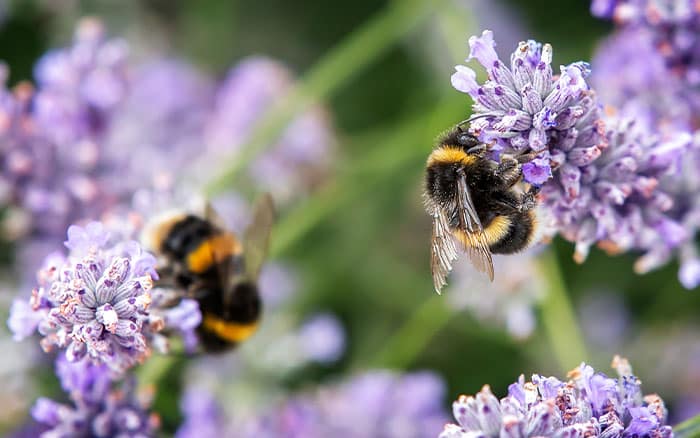Despite the continuously wet weather we’ve had in the UK this summer, that doesn’t mean we won’t still have a drought this year.
If your area has suffered from a particularly long stretch without rainfall, and hosepipe bans are in place, your garden may be looking a little dry. There are ways to revive your plants after these dry periods, even if your plants look woefully crispy.
How to prioritise
Have a little walk around your garden. Consider the plants that you have, that require watering regularly. They will probably need your attention first and are likely the plants looking the most affected by the dry weather.
Also consider focusing on the plants that are showing clear signs of stress, as these will need early attention.

Some of the plants that may appear the most stressed are those that are less established.
These plants should also make it to the top of your priority list. Trees and shrubs that are only a couple of years old will be particularly vulnerable.
It is also worth considering your flowering plants. Flowers tend to produce less pollen during periods of drought, which means less available for bees and other pollinators.
Try to give some attention to your most pollinator-friendly plants when deciding which to focus on first.
Pots and Containers
Plants in pots, containers, grow bags, and windowsill planters are the most vulnerable during periods of drought. These plants rely on their resident gardener to provide them with consistent water.
Additionally, once the compost in these pots has dried out, they can be quite stubborn about soaking up water again. They will also shrink away from the sides of their container.
One of the best ways to revive containers is to place the whole container, if possible, into a large saucer, tray, or bucket full of water.
This will allow the compost to soak up slowly from the bottom, reviving the roots first.
If you can, move the containers out of direct sunlight whilst they are absorbing the water.
If your container is too large for this method, water it traditionally with a hose or watering can.
But don’t do this in regular sprinkles throughout the day. Give them one large soaking, and then allow them to drain.

Should you revive your lawn?
It is tempting to hose down your entire lawn or dig out the sprinklers once it has gone brown from dry spells. But try to resist the temptation. There may be more droughts or hot spells on the way, which will mean new growth won’t survive.
Instead, let it go brown. Lawns are notoriously good at reviving themselves once the rains return. This will also mean you can save water for your other vulnerable plants.
Another way to help your lawn is to avoid cutting and fertilising it in dry conditions.
If you want to cut it, raise the cutting height, and let the clippings fall back onto the lawn rather than collecting them up.
This acts as a kind of mulch, helping the grass to retain any moisture. Also, this avoids storing it up elsewhere, as this grass is so and dry may pose a fire risk if left piled in the heat.

Other ways to help your plants to recover
One way that you can really give your beloved plants the best chance at coping in a drought, is by weeding. By vigilantly keeping weeds out of your garden, your plants have less to compete with for moisture in the soil.

Between periods of drought, apply mulch around the base of your plants. This will help your soil to retain moisture for longer.
You can also do this in the spring, before the summer comes along, to keep that April shower moisture where your plants need it.
When it comes to foliage that has been damaged by drought and too much sunlight, it is tempting to want to remove it.
Consider leaving it where it is. Because your plant will use energy to replace the growth, which may end up wiped out by another drought.
Additionally, this is helpful in providing shade for the rest of the plant, and any plants beneath it.
How to prepare for future droughts
Have a water butt to collect water throughout the year. Rainwater contains many nutrients that are beneficial to your plants. And in the case of a hosepipe ban, you have a supply of water to rely on during hot and dry periods.
Get hold of some horticultural fleece or an alternative to protect vulnerable plants that can’t be moved to a cooler spot.
Another option to help your garden survive a drought is to grow some more drought-tolerant plants.
Some wonderful options include Agapanthus, hardy Geraniums, Stipa tenuissima, Bearded Irises, and Sedums.
All will help your garden to maintain some colour during those summer heatwaves.

Guarantee that your garden will bounce back more beautifully than ever after a dry spell by using my drought-survival guide.

Leave A Comment